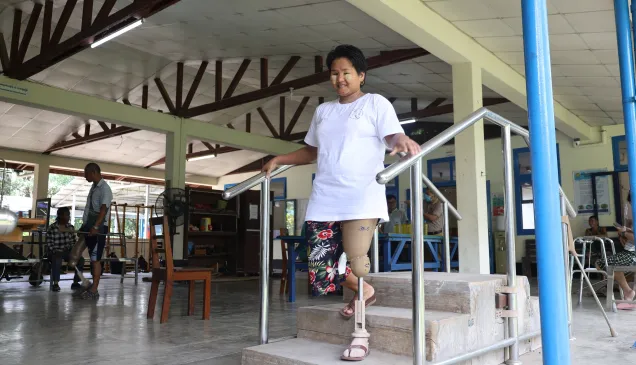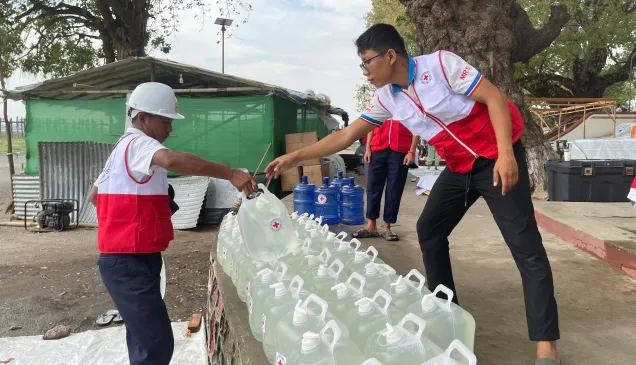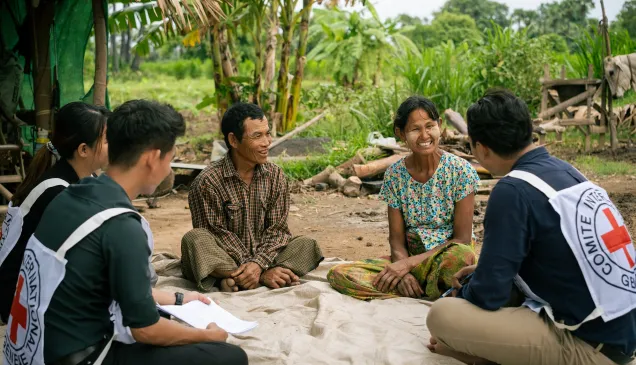Rakhine: A clinic open to everyone
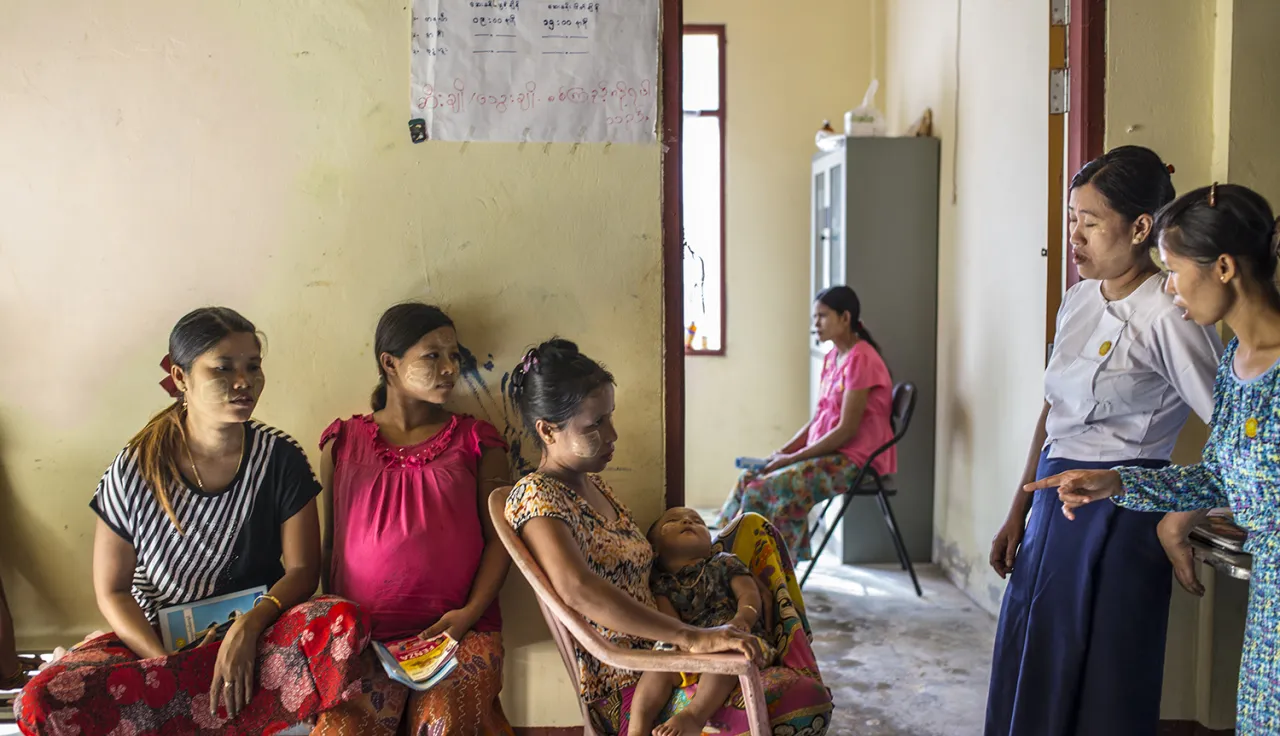
In a village in central Rakhine, a clinic is used by Rakhine and Muslim communities alike. It serves as an example of peaceful coexistence for the rest of the state.
Come Monday morning, the Sin Tet Maw clinic rings with the laughter of women. The crowd nestles together on the benches along the walls. Some lean back to ease the weight of their pregnant bellies while others lean forward over infants, who are sleeping cradled amidst their crossed legs. Some are Rakhine and some are Muslim.
Despite the outbreak of violence in 2012, which bitterly divided the two communities, all of them sit peacefully awaiting their checkups.
“Everyone is welcome here,” says San Mya Yee, the health visitor and head midwife. “We treat them all equally. We give them good care.”
Elegant in her long, navy blue skirt and a crisp white blouse, San Mya Yee oversees a health facility where members of all communities can receive treatment. Originally from the state capital of Rakhine, Sittwe, San Mya Yee has been head midwife in Sin Tet Maw for ten years now. She moves easily among her patients, smiling and sharing a joke. Her motherly warmth makes everyone feel safe and welcome. In addition to a special focus on maternal and infant health, the clinic also provides primary-health-care services to the wider community.
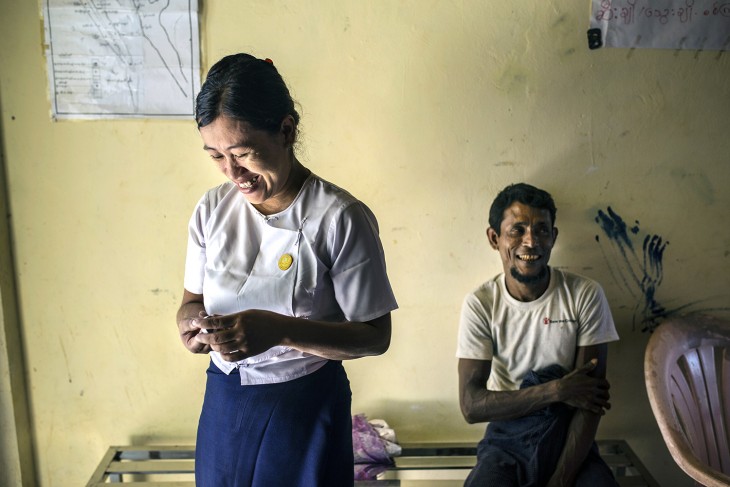
San Mya Yee, the head midwife. CC BY-NC-ND / ICRC / Minzayar Oo
Nar Wa Eishar, 40, arrives with his teenage daughter Taw Mi Nar Khar Thu. She is weak and she has not been eating. San Mya Yee greets them with a reassuring smile and ushers the girl into the examining room. “I bring my family here regularly,” says Nar Wa Eishar. “They take good care of everyone. When I see another Muslim lady or man who is sick, I tell them to come here for help.”
Ma Bu Chay, 28, shares the same level of trust as Nar Wa Eishar for the clinic. She had her first three children at home, but decided to deliver the fourth at the clinic. “When I came and met the head midwife, and saw all the equipment, I realized that this was a safe place to have my baby,” she says, hugging her now seven-month-old daughter.
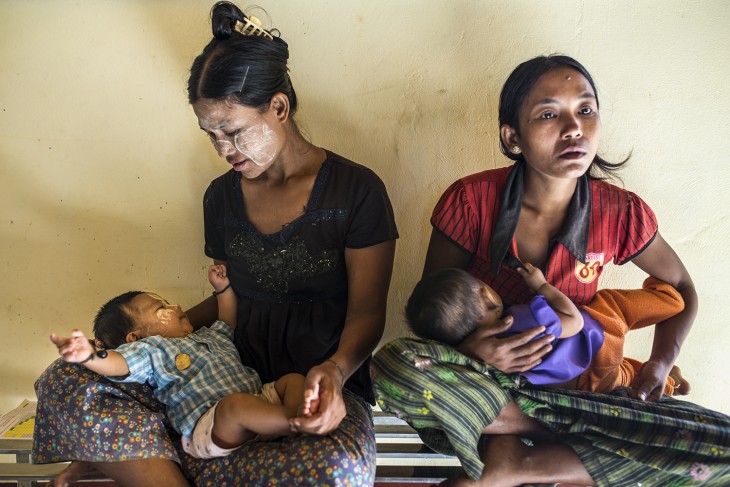
Women with their child at the Sin Tet Maw clinic. CC BY-NC-ND / ICRC / Minzayar Oo
And what does Ma Bu Chay think about sharing the clinic with Muslim women which, in some parts of Rakhine state, would not be possible at the moment?
“It’s no problem,” she says. “We sit together. They also deliver their babies here. It’s fine.” “Today in Rakhine, we need to find ways to encourage communities to connect. The health clinic is a natural point of connection between these two communities that are still recovering from violence,” says Haezin Nay Lin, the medical field officer for the ICRC in Rakhine.
In 2016, the ICRC entered into a two-year partnership with the Rakhine Ministry of Health and Sports to support the maternal health-care services in Pauk Taw and five other townships. The ICRC supports existing health-care facilities with the aim of building the foundation for a well-functioning and accessible health-care system.
In Sin Tet Maw, achieving this is a relatively minor task. It could mean fixing a delivery table, a water filter, providing clean delivery kits or installing solar-powered lights to allow the clinic staff to safely deliver babies at night.
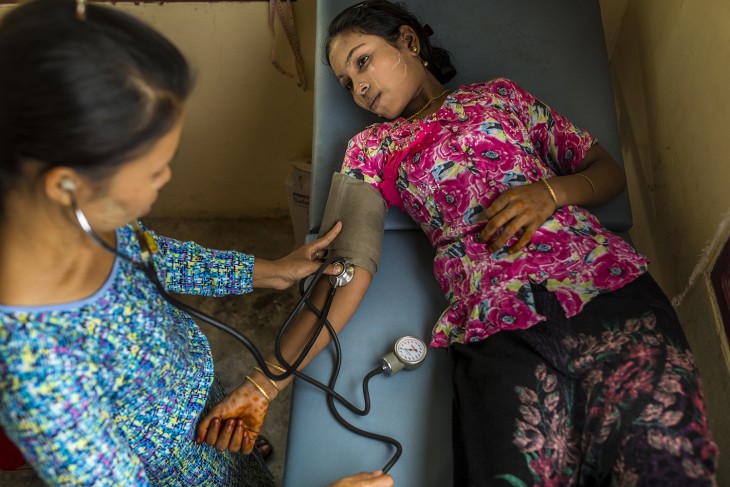
CC BY-NC-ND / ICRC / Minzayar Oo
Health staff are also trained in safe delivery and maternal health. Similar training courses were set up in Maungdaw, northern Rakhine, prior to the recent upsurge of violence. “We are ready to continue to provide the same support for all communities in northern parts of Rakhine,” says Haezin Nay Lin.
San Mya Yee says she can already see the positive effects of the ICRC’s assistance. “This year we received a new delivery room and medical equipment. Word went around about our services, and more people came to the clinic.” She glances over at the women talking together as they play with one another’s babies, and she smiles. “I think next year, with more improvements, even more will come.”
Additional information
It’s estimated that the maternal mortality rate in Myanmar was 178 for 100,000 women in 2015. Despite important progress in 15 years, it is the second worst rate among South-East Asian countries. The infant mortality rate, 40 per 1000 births, is also among the worst in the region.
The Rakhine Ministry of Health has partnered with the ICRC for a two-year project (2016–2017) to improve maternal and child health in six townships in Rakhine, including Pauktaw. The project focuses on regular monitoring during pregnancy, safe delivery, post-natal care and immunizations for the babies’ first year.
The partnership will also support rural health clinics, such as the one in Sin Tet Maw, to receive equipment as needed. The ICRC will support hospitals in the Pauktaw township to deliver safe caesarian sections, which are necessary in about 10% of cases.
Throughout 2017, refresher training courses in maternal and infant health will be given by the Ministry of Health and Sports and the ICRC to nearly 200 health assistants, midwives, doctors and traditional birth attendants throughout Pauktaw township.
See more on: Myanmar People

